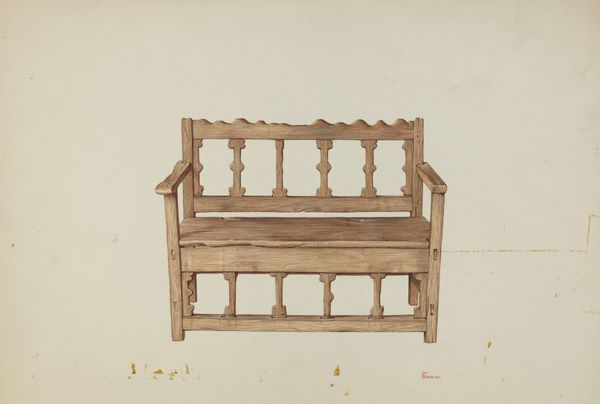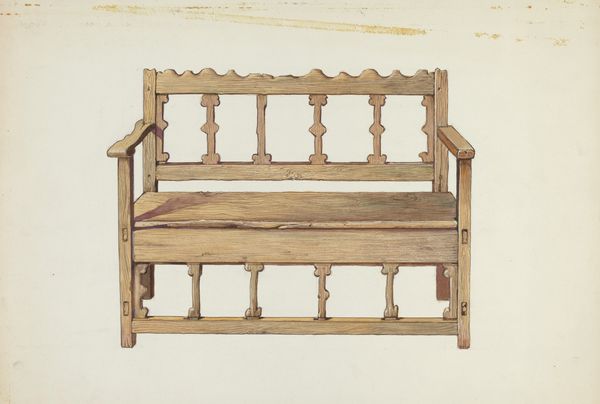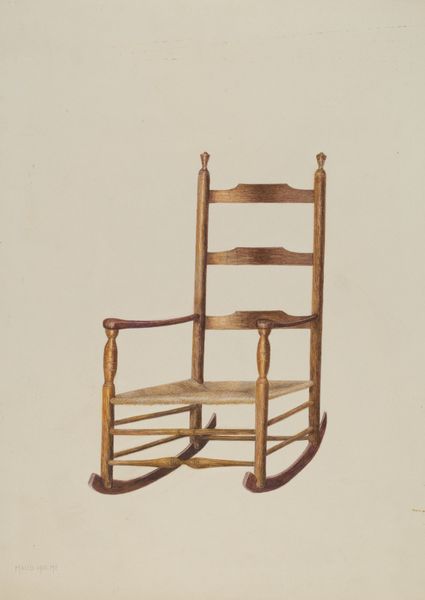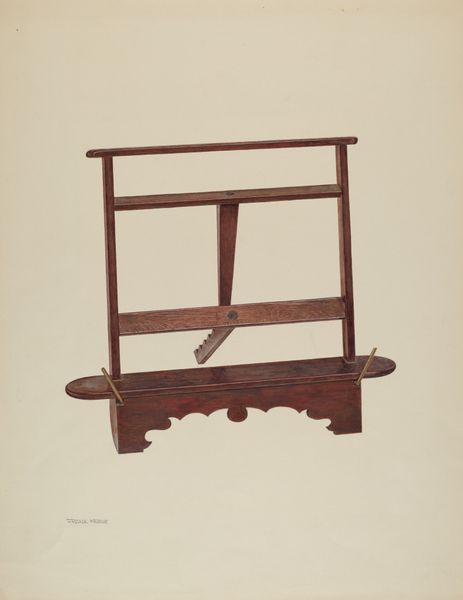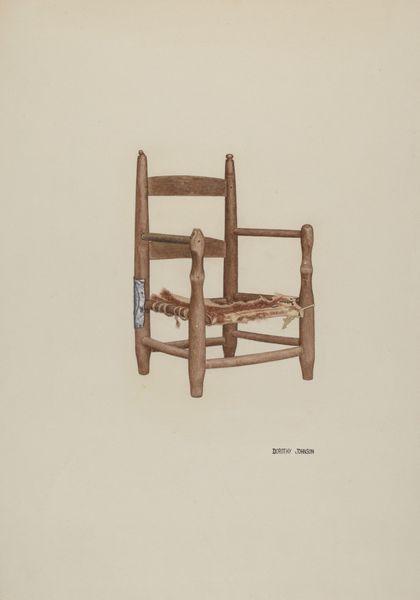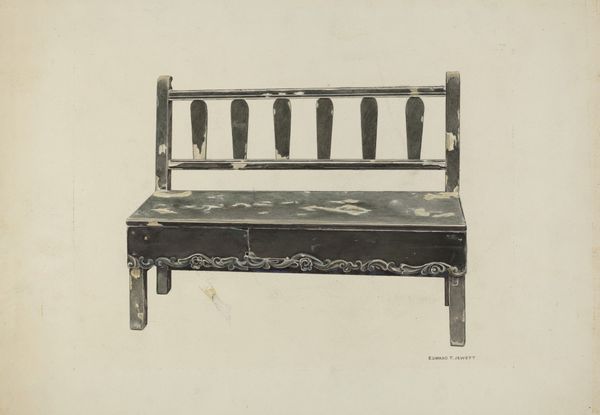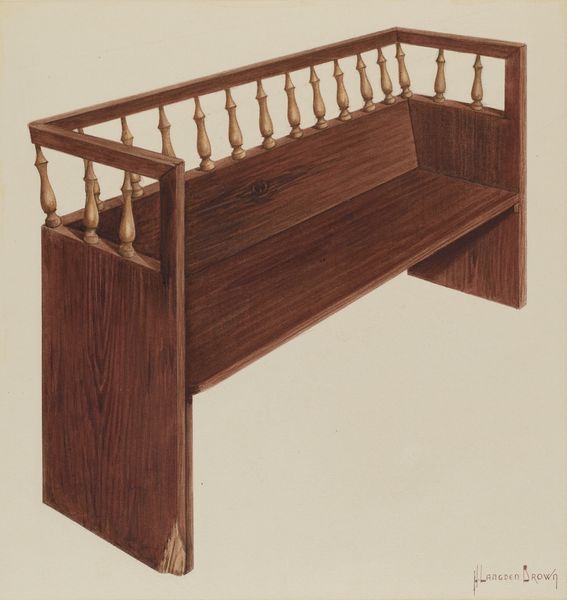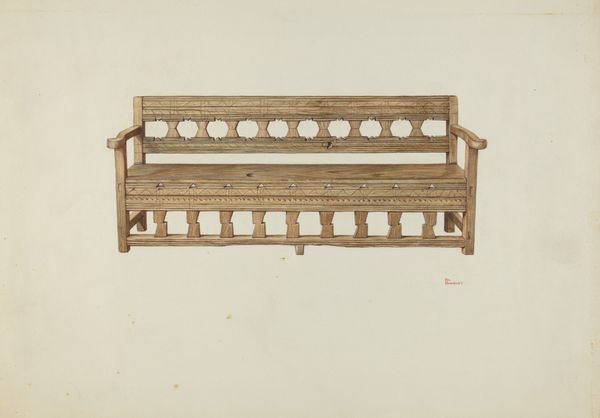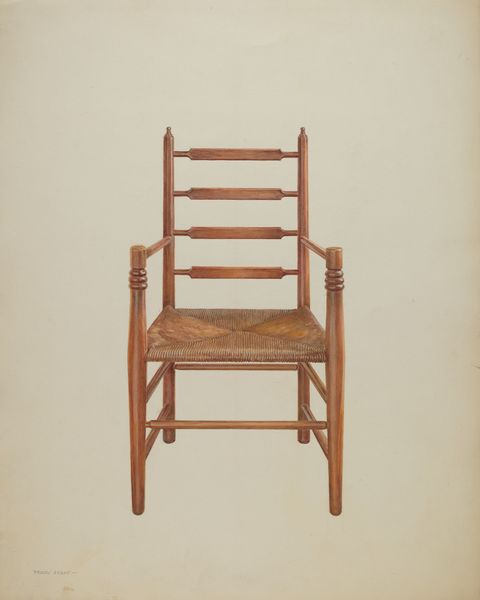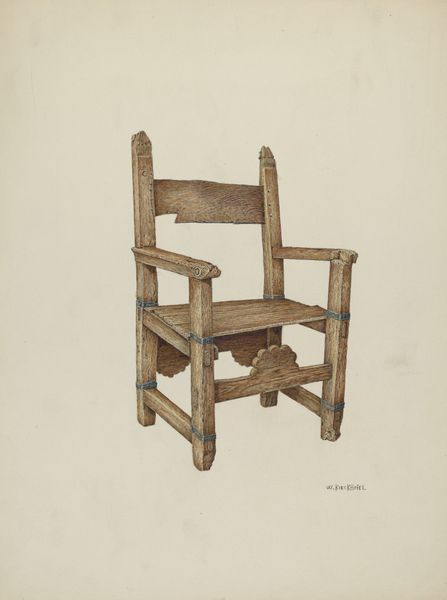
drawing, wood
#
drawing
#
ceramic
#
wood
#
academic-art
#
realism
Dimensions: overall: 26.7 x 35.6 cm (10 1/2 x 14 in.) Original IAD Object: 2'10 1/4"long; 2'3 1/2"high; 1'1"wide. Arms 1'3 3/4"
Copyright: National Gallery of Art: CC0 1.0
Curator: This unassuming yet striking drawing is titled "Bench," completed in 1940 by Robert W.R. Taylor. The media is listed as drawing and wood. What stands out to you? Editor: Initially, I see stability. It’s so grounded, presented front-on, symmetrical. There’s also a feeling of age, of being worn, but also deeply familiar. It conjures up notions of craft, labor, and perhaps the weight of history bearing down upon this object. Curator: That reading really resonates, especially given the era in which it was created. Consider the impact of the Great Depression just ending and the start of World War II; ordinary, handcrafted objects, like this humble bench, held significant value, representing resilience and local economies. Editor: Yes, absolutely. I’m drawn to the visual language—the repetitive, almost glyph-like quality of the supports beneath the seat and the backrest. It brings a sort of symbolic dimension to something as simple as a bench. It feels encoded with meaning. Curator: It is tempting to see such forms and relate to older patterns and motifs! Think of vernacular furniture designs rooted in European craft traditions— a silent protest perhaps, or perhaps even an active reclamation of regional identity at a time of homogenizing global conflict. How might we contextualize an artwork so focused on something everyday, functional even? Editor: Right. Is it a deliberate statement of simplicity and humility? Or is the bench standing in for broader concepts of community, shared space, the hearth as a fundamental human concept? One wonders if we were sitting here together what narratives of kinship and neighborliness would emerge from that place? It reminds me of certain family heirlooms with an incredible evocative weight due to the stories we impose on these objects that have accompanied so much of our lives. Curator: Those possibilities are certainly there, wouldn't you agree? In the end, by choosing to depict something so fundamentally useful and handmade, Taylor highlights not just an object, but the human relationships and histories embedded within it. Editor: Agreed. Looking closer, "Bench" invites us to appreciate not only the tangible presence of this humble object, but the intricate symbolic potential residing within it. A thought provoking paradox that certainly goes beyond mere furniture.
Comments
No comments
Be the first to comment and join the conversation on the ultimate creative platform.
